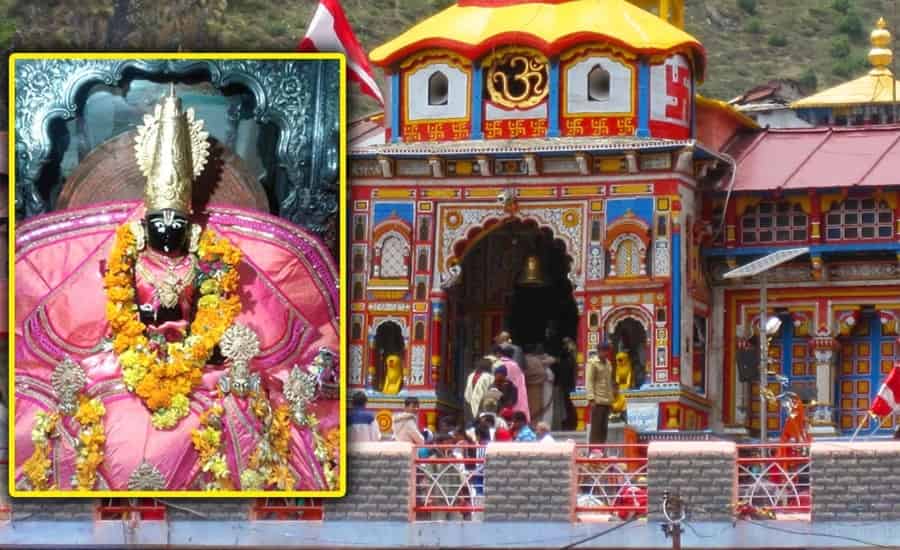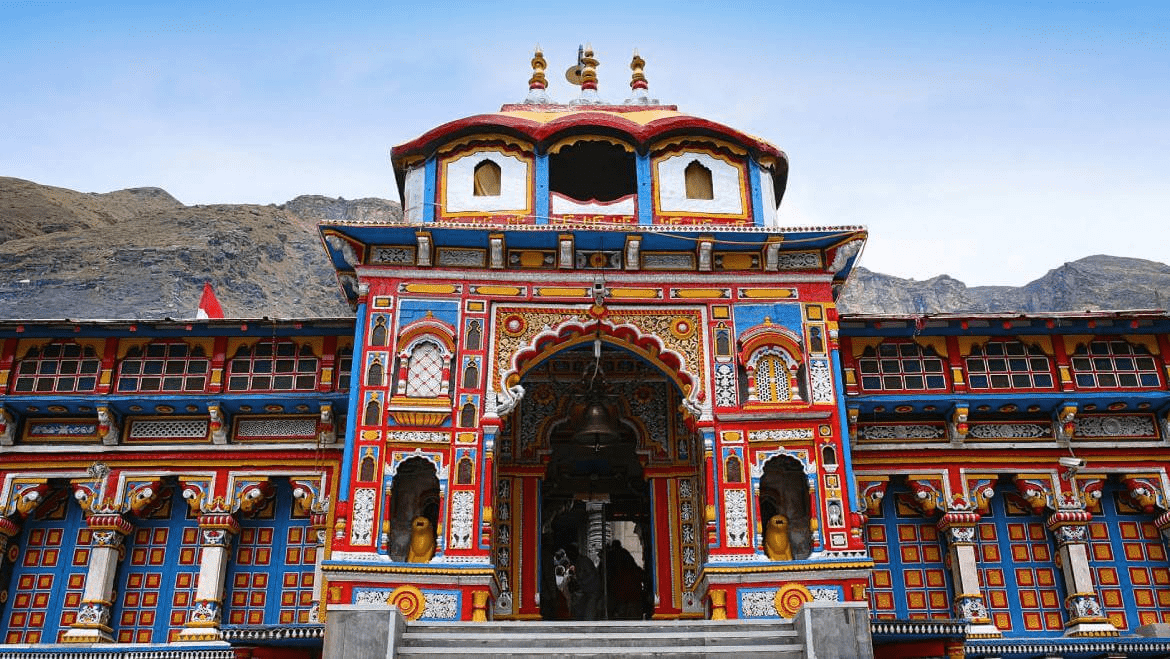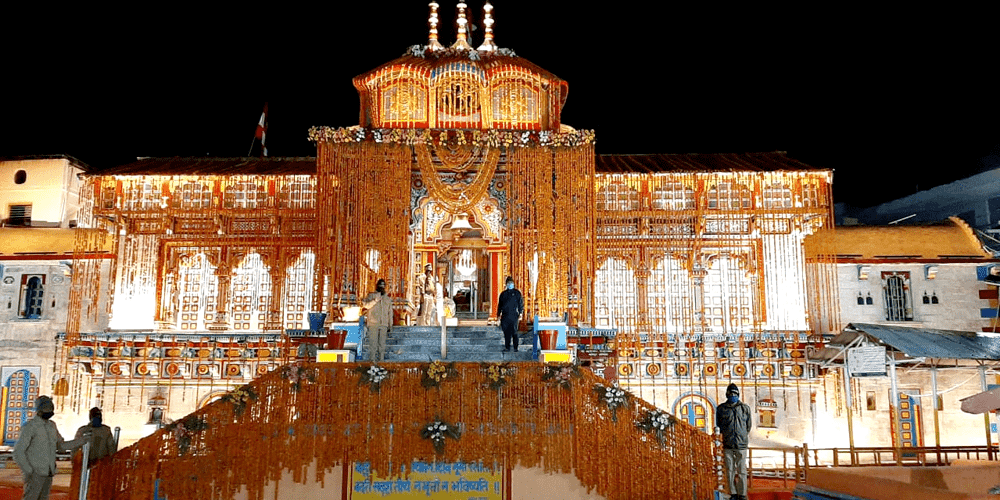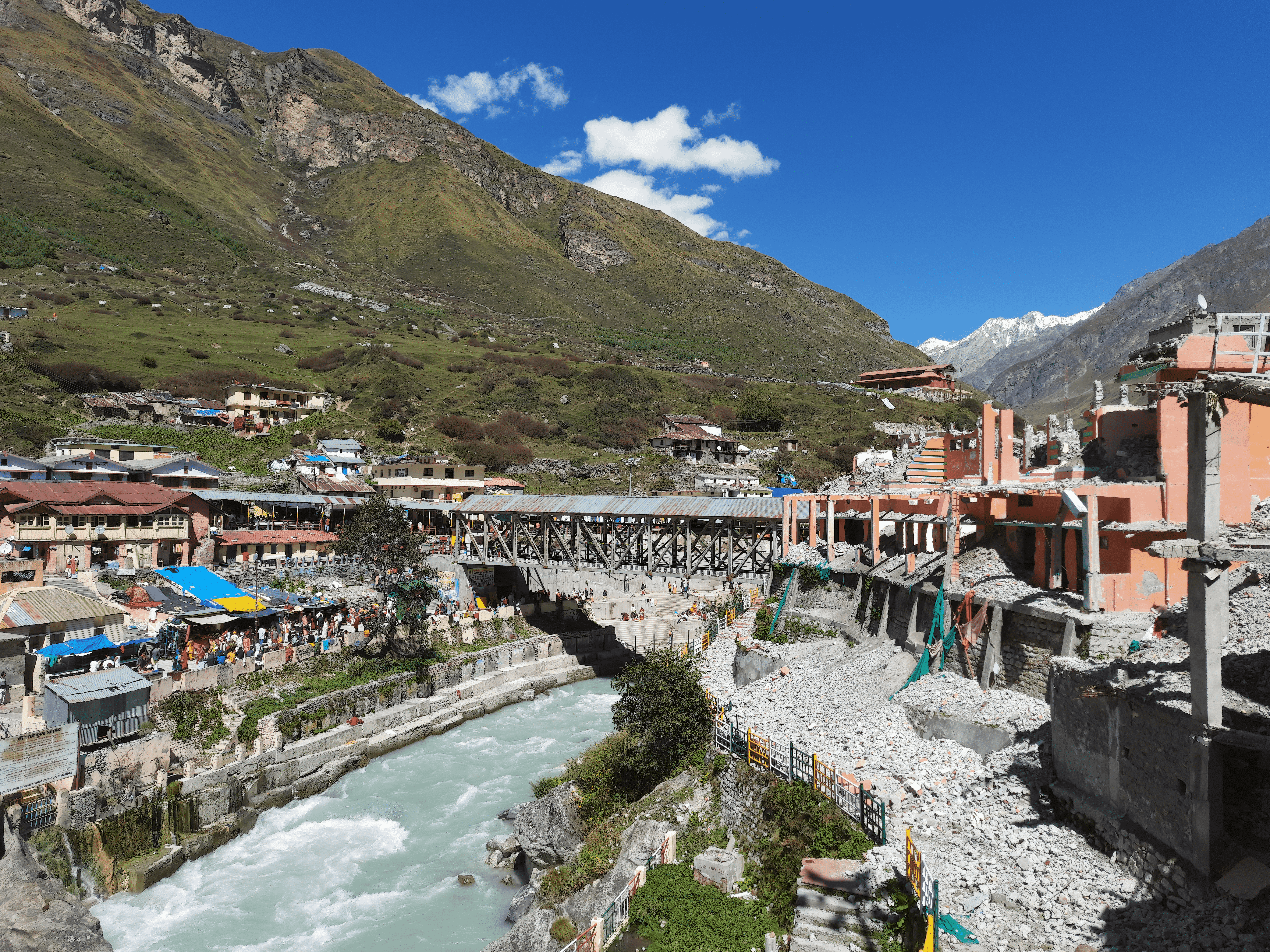Tucked amidst the snow-capped peaks of the Garhwal Himalayas in Uttarakhand, Badrinath Dham is one of the most revered pilgrimage sites in India. As part of the Char Dham Yatra, this sacred shrine holds profound religious significance for Hindus and attracts devotees and travellers from around the world. With its spiritual aura and breathtaking natural beauty, a journey to Badrinath Dham is a soul-enriching experience.

Historical and Mythological Significance
Badrinath Dham, dedicated to Lord Vishnu, is steeped in mythology and history. According to legends, Lord Vishnu performed deep penance here, oblivious to the harsh weather. Goddess Lakshmi, his consort, took the form of a Badri tree to protect him from the elements, hence the name “Badrinath.” The temple’s origins are believed to date back to the Vedic era, with Adi Shankaracharya reviving its prominence in the 8th century.
Architectural Marvel

The temple’s architecture is an elegant blend of traditional North Indian design and modern craftsmanship. Positioned at an altitude of 3,300 meters (10,827 feet), the temple is built with a colourful façade, featuring intricate carvings and a towering spire. Inside, the sanctum houses a one-meter-tall black stone idol of Lord Vishnu in a meditative posture, flanked by other deities.
Key Highlights of the Visit
- Tapt Kund: Before entering the temple, devotees take a holy dip
in the natural hot water spring known as Tapt Kund. The spring is
believed to have healing properties.

- Brahma Kapal: This ghat on the banks of the Alaknanda River is a significant site for performing ancestral rites.
- Mana Village: Just 3 kilometers from the temple, Mana is the last village on the Indian border. It offers a glimpse into local culture and myths, including the famous Bhim Pul and Vyas Gufa.
- Neelkanth Peak: The stunning backdrop of the snow-covered
Neelkanth Peak enhances the divine atmosphere of Badrinath Dham.

Best Time to Visit
The temple opens for six months every year, typically from late April to early November, depending on the weather. The best time to visit is between May and June or September and October, when the weather is pleasant, and the surroundings are lush.
How to Reach Badrinath Dham
- By Air: The nearest airport is Jolly Grant Airport in Dehradun, about 315 km away.
- By Train: The closest railway station is in Rishikesh, approximately 295 km from Badrinath.
- By Road: Well-connected roads make it accessible via buses or private vehicles from major cities in Uttarakhand.
Spiritual Experience and Beyond
Visiting Badrinath Dham is not just a religious journey; it is also an opportunity to immerse oneself in the serene beauty of the Himalayas. The tranquil environment, the rhythmic chants, and the divine vibrations leave an indelible mark on every visitor’s heart. It is a place where spirituality meets nature, offering solace and rejuvenation.
Tips for Travelers
- Acclimatization: Given the high altitude, take necessary precautions to avoid altitude sickness.
- Clothing: Carry warm clothing, as the weather can be unpredictable.
- Bookings: Make prior arrangements for accommodation and transport, especially during peak pilgrimage season.
- Responsible Tourism: Respect the sanctity of the place and avoid littering.
Conclusion
Badrinath Dham is a divine confluence of spirituality, mythology, and natural beauty. A visit to this holy shrine is a journey of faith, devotion, and introspection. Whether you seek spiritual solace or wish to marvel at the grandeur of the Himalayas, Badrinath Dham promises an unforgettable experience. Embark on this sacred pilgrimage and let the divine blessings of Lord Vishnu guide you on your path.